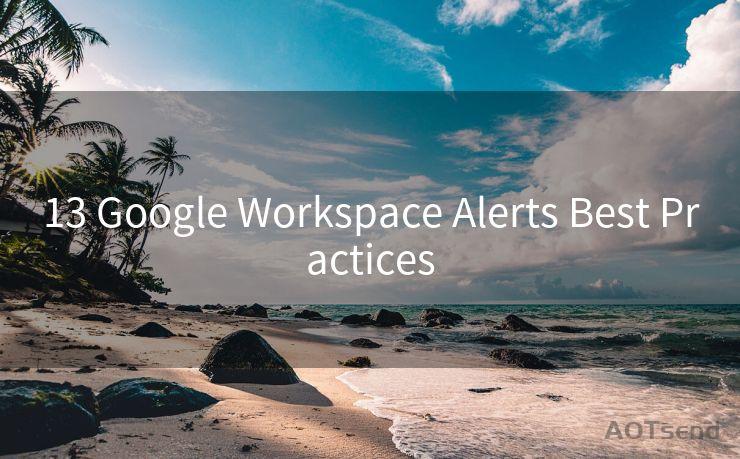13 Google Workspace Alerts Best Practices




In the modern workplace, Google Workspace has become an essential tool for collaboration and productivity. However, with great power comes great responsibility, and it's crucial to stay vigilant against potential issues or misuses. That's where Google Workspace alerts come into play. By setting up alerts, you can stay informed about critical activities and take proactive measures. Here are 13 best practices for managing Google Workspace alerts effectively:
1. Determine Alert Needs
Before setting up alerts, identify what information is critical to your organization. This could include unusual login activities, mass deletions, or external sharing of sensitive documents.
2. Use Predefined Alerts
Google Workspace offers predefined alert policies. Familiarize yourself with these and activate the ones that are relevant to your organization's needs.
3. Customize Alerts
If predefined alerts don't cover all your bases, create custom alert policies. This allows you to fine-tune what triggers an alert and how you're notified.
4. Set Thresholds Carefully
When customizing alerts, set thresholds that balance between being too sensitive (leading to alert fatigue) and not sensitive enough (missing important events).
5. Regularly Review Alerts
Periodically review triggered alerts to ensure they're relevant and actionable. Adjust policies as needed based on this review.
6. Designate an Alert Response Team
Have a dedicated team or individual responsible for responding to alerts. This ensures a timely and consistent response.
7. Establish Escalation Procedures
For serious alerts, have a clear escalation path to notify higher-level management or IT security teams.
8. Integrate with Other Systems
If possible, integrate Google Workspace alerts with your organization's SIEM (Security Information and Event Management) system for a holistic security view.
9. Educate Users

Train employees on the importance of alerts and how to respond to them. This reduces false positives and ensures a swift reaction to genuine threats.
10. Test Alert Policies
Periodically test alert policies to ensure they're working as intended. Simulate potential threats to validate the system's responsiveness.
11. Keep Policies Up to Date
As your organization evolves, so should your alert policies. Regularly review and update them to reflect current needs and threats.
12. Monitor External Sharing
Pay particular attention to external sharing alerts, as these can indicate potential data leaks or unauthorized access.
🔔🔔🔔
【AOTsend Email API】:AOTsend is a Managed Email Service for sending transactional emails. Support Email Types: reminders, authentication, confirmations, notifications, verification codes, invoices, password resets, account activations, billing statements, two-factor authentication (2FA), and one-time passwords (OTP) emails, etc. $0.28 per 1000 Emails. 99% Delivery, 98% Inbox Rate.
You might be interested in:
Why did we start the AOTsend project, Brand Story?
What is a Managed Email API, How it Works?
Best 25+ Email Marketing Platforms (Authority,Keywords&Traffic Comparison)
Best 24+ Email Marketing Service (Price, Pros&Cons Comparison)
Email APIs vs SMTP: How they Works, Any Difference?
13. Document and Learn
Maintain a record of triggered alerts and the subsequent actions taken. Use this information to refine future alert policies and response procedures.
By following these 13 best practices for Google Workspace alerts, you can ensure your organization is well-prepared to respond to potential threats and issues promptly and effectively. Remember, an ounce of prevention is worth a pound of cure, and in the case of data security, that's especially true. Stay vigilant, stay informed, and stay secure with Google Workspace alerts.




Scan the QR code to access on your mobile device.
Copyright notice: This article is published by AotSend. Reproduction requires attribution.
Article Link:https://www.mailwot.com/p5151.html



